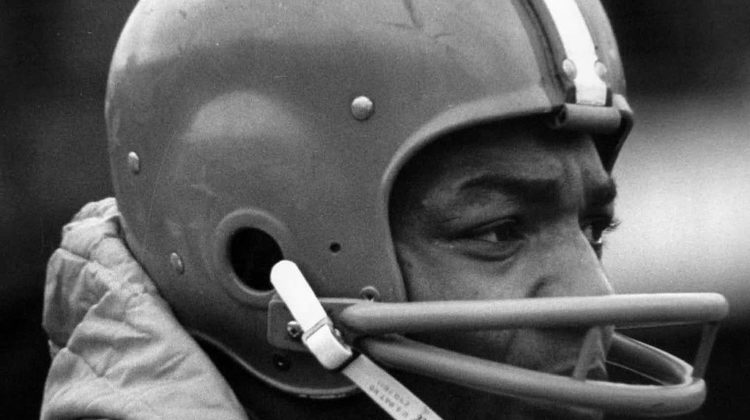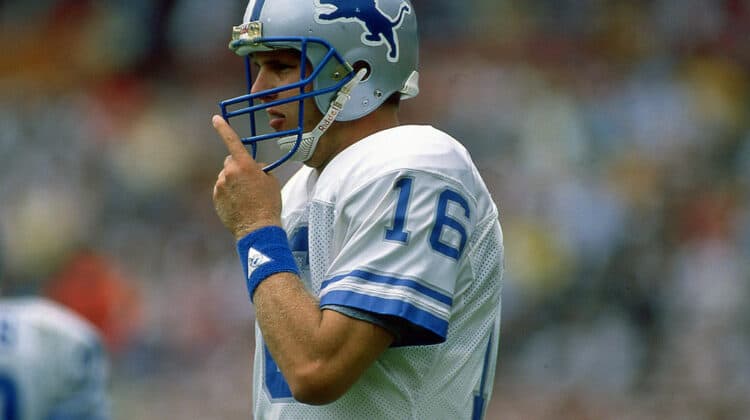
How long did Paul Brown coach the Browns?
Paul Brown was the first coach of two NFL teams: the Cleveland Browns and the Cincinnati Bengals.
For 17 years, he led the Browns and helped the Bengals for a further eight.
Let’s take a look at his career to appreciate how he helped innovate the sport forever.
Brown’s Early Successes
When Arthur McBride formed the Browns in 1946, he didn’t know much about the sport but knew that he wanted the best coach for his new team.
His goal was to find a coach familiar to Ohio and its fans.
This factor was important because if McBride didn’t understand the sport, he did believe in its potential.
As a result, he hired former Ohio State University coach Paul Brown.
Before Brown joined the Buckeyes, they were a mediocre team that had never won a championship.
During his four years with the team, he led them to 18 victories with just eight loses and a single tie.
And he helped them win their first national championship in 1942, only one year after taking over.
Brown had a reputation as a tough but innovative coach who had the skills necessary to form uncertain players into great athletes.
When he signed up, Brown was ready to make his mark on the AAFC.
And after polling the community for potential team names, McBride chose the Browns in honor of the new coach.
Paul was against the idea from the beginning but gave up when no better team name could be found.
Though The Panthers was an early leader for McBride, Paul nixed the idea because he had once coached an unsuccessful team named The Panthers.
Successes In the NFL
Brown immediately rewarded McBride’s faith when he led Cleveland to four straight AAFC championship wins.
After the league folded – partially due to the Brown’s huge success – they were purchased by the NFL and integrated into the growing league.
And although the NFL’s many fans believed that the Browns would be a joke, they immediately proved their relevance by stomping the Philadelphia Eagles – then the defending champions – in their debut game and winning that year’s NFL championship.
Brown went on to win two more championships and was a vital part of the management that chose running back Jim Brown in the draft.
Unfortunately, McBride eventually sold the team to a man named Art Modell, who owned the club until moving it in 1996.
Modell was the opposite of McBride. Modell was a more hands-on owner who often interfered with or overrode Brown’s decisions.
As a result, Brown was gone by the 1962 season and spent the next few years collecting checks from the team on his still-existing contract.
The Formation of the Bengals
Retirement was a living hell for the still relatively young Brown.
As a result, he made a return to the NFL in 1967 when he helped launch the expansion team, the Cincinnati Bengals.
Brown was not only the first coach and general manager of the group but was also honored by having their stadium named after him.
Their first few years in the league were rough – 1968 and 1969 saw the team go 7-20-1 – Brown eventually turned the Bengals into a competitive team.
For example, Brown led the Bengals to playoff spots in 1970, 1973, and 1975.
However, Cincinnati never left the first round of the playoffs under his leadership.
Growing older and realizing that football had caught up with and in some ways surpassed his innovations, he retired from coaching in 1975.
However, he remained the team president until he died in 1991.
His son, Mike Brown, took over for him at the position.
Innovations By Paul Brown
Few individuals can be said to have done so much for the NFL as Paul Brown.
As the head of two successful clubs, he helped create championship-caliber football for over two decades.
Brown also helped to innovate many unique concepts that proved to be critical to the success of future football generations.
For example, Brown invented the modern facemask as a way of keeping his players safe from the demands of the sport.
He was also the first coach to use a playbook, the first to create a practice squad, and one of the first to realize the importance of strength over speed.
These early insights helped to make him the success he became and was critical to the success of other squads.
As a coach, he also innovated passing plays, such as the draw, and was critical in the creation of the West Coast Offense with the Bengals.
This offense consisted of short, but accurate passes that later became the style of his former assistant coach Bill Walsh when he went on to lead the San Francisco 49ers to several Super Bowl wins.
NEXT: Why Don't The Browns Have A Logo? (Everything To Know)










Would be nice to have the coach of the year name after Paul brown